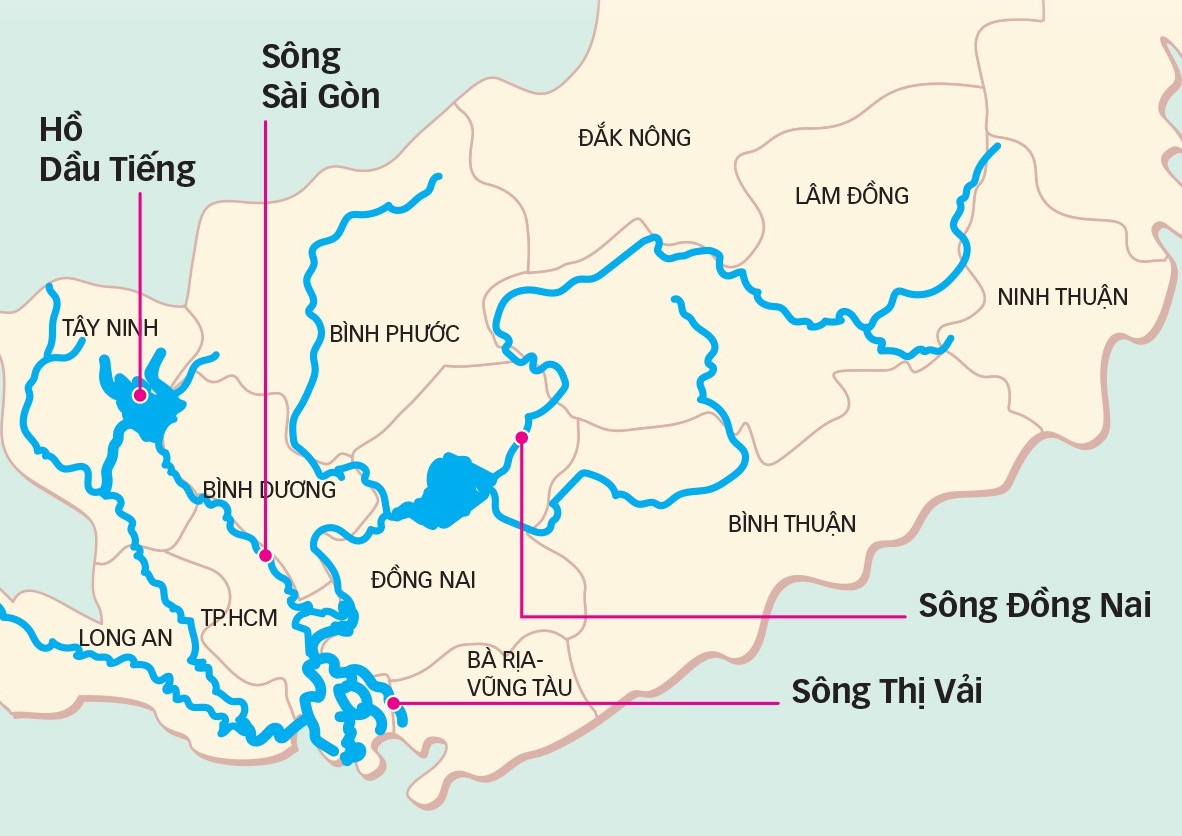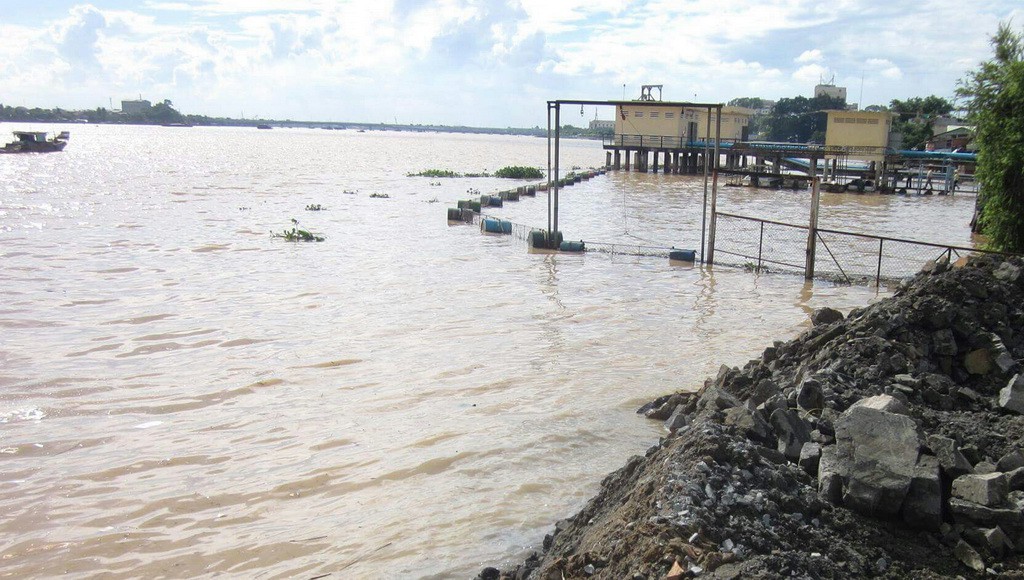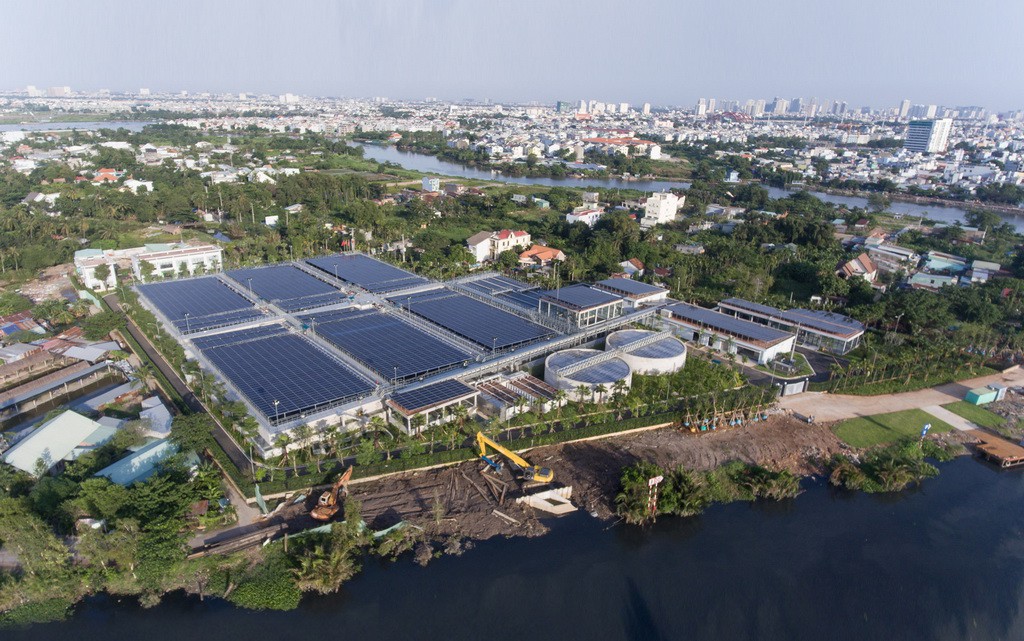About three million cubic meters of wastewater is dumped into the Dong Nai River and its tributaries on a daily basis, posing high risk of environmental pollution along Vietnam’s longest river.
The volume of liquid waste, discharged by household, farming, and industrial activities in 11 provinces along the Dong Nai River basin, has exceeded three million cubic meters, a large portion of which is not properly treated.
The figure may top 4.5 million cubic meters per day by the year 2020.
The Dong Nai River is the longest inland waterway in Vietnam, while its basin is the second largest in the country’s southern region, following the Mekong River.
Stretching some 586 kilometers, the river snakes through 11 localities including Ho Chi Minh City, southern Dong Nai and Binh Duong Provinces, and Lam Dong and Dak Nong Provinces in the Central Highlands.
The latest statistics showed that wastewater in Ho Chi Minh City alone reaches 1.75 million cubic meters a day, of which 50,000 cubic meters is released from 21 industrial parks.
Only 21 percent of the waste is thoroughly treated before being discharged into the waterway.
In Dong Nai Province, the daily amount of wastewater from 31 industrial zones is nearly 102,000 cubic meters, 71 percent of which is treated.
 |
| A map detailing the basin of the Dong Nai River in southern Vietnam. Photo: Tuoi Tre |
Meanwhile, about 80 percent of liquid waste from local households is directly dumped into the river without any treatment.
A similar situation also occurs in Binh Duong, Long An, Ba Ria-Vung Tau, and other provinces.
According to a project on environmental protection along the Dong Nai River, which was approved by the prime minister in late 2007, at least 60 percent of residential areas and 100 percent of industrial parks, processing zones, and hi-tech parks along the river basin would be equipped with sufficient waste treatment systems by 2015.
However, many areas still lack these facilities.
Deferred projects
Despite the approval of the central government and local administrations, many constructions related to environmental protection have been postponed or carried out at a sluggish pace.
In Bao Loc City, Lam Dong Province, the building of a wastewater treatment plant was passed in February 2012 with the investment of VND263 billion (US$11.5 million).
At present, a detailed plan is still being formulated to seek financial assistance from the central government.
 |
| A pump station of the Bien Hoa Water Company, located in Bien Hoa City, Dong Nai Province, along the Dong Nai River. Photo: Tuoi Tre |
As a result, Loc Son and Phu Hoi, two major industrial parks in Lam Dong, have operated their own treatment plants, which do not really meet standards.
In September 2013, the People’s Committee in Ba Ria-Vung Tau Province approved a drainage and waste treatment system project in the Phu My New Urban Area.
The plan, including the establishment of a treatment plant with a capacity of 29,700 cubic meters a day, is still on paper as site clearance for the project makes little progress.
In the south-central province of Binh Thuan, a VND610 billion ($26.8 million) waste treatment project is expected to be implemented in 2017-18, despite its approval in 2014.
In Long An Province, a waste treatment project in Vinh Hung District with a capacity of 1,300 cubic meters per day is thought to be operated in the near future.
Other urban areas in the province still need a decent waste treatment facility.
Like us on Facebook or follow us on Twitter to get the latest news about Vietnam!






















































